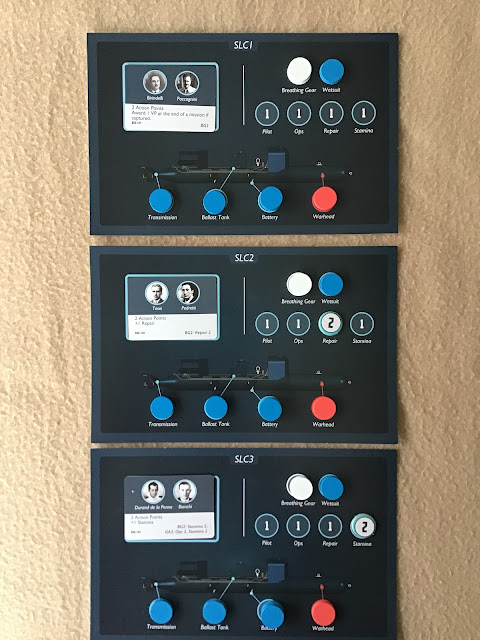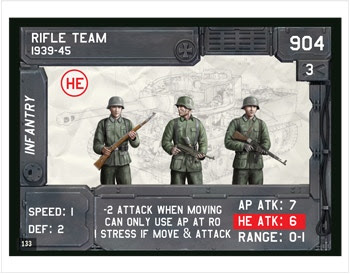Napoleon 1807 La Campagne de Pologne
by
Shakos Games

In 1806 Napoleon crushed Prussia in a campaign that looked pretty much like a 19th century blitzkrieg. He had beaten an Austro-Russian Army in 1805 at Austerlitz, but just as Frederick the Great learned, the Russian Army was a lot like the Energizer Bunny. The Russians had pulled back into Poland to reorganize. This led to the Grande Armee's first taste of campaigning in eastern Europe. The French Army did not like it at all. The roads were dirt tracks, and the poor villages were nothing like what they had found in what would become the Germany we know. Instead of glory and march on, Napoleon often heard his grognards (grumblers) yell 'peace' at him as he rode by. The campaign in Poland was two phased. First, at the beginning of 1807, Marshal Ney had disturbed a hornet's nest by disturbing the Russians, when the French Army was in winter quarters. This led to the brutal, and inconclusive Battle of Eylau on February 7th and 8th. This was the first real check Napoleon had ever received on the battlefield, and had not come out with a clear cut victory. It was also one of the bloodiest. Marshal Ney observed "What a massacre! And without result". Napoleon told Marshal Soult "The Russians have done us great harm," to which Soult replied "And we them, our bullets were not made of cotton". Later that year in June, General Benningsen (commander of the Russian Army) seems to have had a momentary attack of lunacy at Friedland. He had thought to defeat Marshal Lannes, before the rest of the Grande Armee came to the rescue. Benningsen decided to cross a river and trap himself right in front of Napoleon. It would have been wiser to jump into a lion's den. The Battle of Friedland led directly to the Peace of Tilsit. So let us see what Shakos Games has given us:
1 mounted game board 90 x 60 cm
1 rulebook
1 scenarios booklet
1 quickstart booklet
3 player aids (orders of battle)
2 player screens
2 sets of 48 cards
6 additional cards for Napoléon 1806
2 sticker sheets (100)
More than 250 wooden pieces
10 combat dice
2 cloth bags

This list is very much akin to someone saying they bought you a diamond and they hand you the Star of Africa. Opening the box, you are presented with something new in the wargaming world. This is a wargame that is the offspring of a Euro game and a normal wargame. So, it has the beauty of a Euro game, and it is also an in depth wargame. This is about the third game I have seen with this kind of pedigree, but this game by far has the best looking components. The mounted game board is a beauty to behold. From the picture of a flintlock pistol along one side, to the Victory Point Tables, it is wonderfully done. The wooden pieces are among some of the best I have ever seen. They were cut precisely, and there are no extra flanges, etc. The stickers are either pictures of the actual Marshal/General or a Cossack and a French light cavalry. These represent vedettes, and are used in the optional rules. In a change from most block games the side that faces your opponent actually has a sticker to denote which side it belongs to. So many little things like this are added to the game. There are two screens to hide your opponent and your Order of Battle Aids showing your forces strength and amount of fatigue. The French one has a golden eagle and the Russian shows a golden double-headed eagle. On the inside of both screens are various aids, done in wonderful color, to help with the play sequence and other rules. There are three double-sided Orders of Battle Player Aids. These show the setups for the Pultusk, Eylau, and Friedland battles. There is one very large Player Aid that is four pages long. The middle two pages are a fold out showing exactly how to set up the map and the various Player Aids. There are two cloth bags that also have the French and Russian eagles on them. These epitomize the care and sheer artistry of the game's components. There are two sets of cards (Russian, French) that are on par with the rest of the components as far as looks. They are also easy to read and understand. I cannot say enough about how wonderful the game looks. The Rulebook is in large print and full beautiful color. The actual rules, with examples of play, are fourteen pages long. There are 'Rules of the Grognard' that can be used to enhance the game. The last four pages explain each Playing Card in detail. The Scenario Booklet is just as sumptuous as the rest of the game's components. There are thirteen scenarios in all. These are the scenarios:
1-7 are Campaign Scenarios
1 - Pultusk Scenario Historical Placement
2 - Pultusk Scenario Free Placement
3 - In the Mud of Poland Free Placement
4 - Eylau Campaign Historical placement
5 - Eylau Campaign Open Placement
6 - Friedland Campaign Historical Placement
7 - Friedland Campaign Open Placement
8-10 are Battle scenarios
8 - The Russian Offensive Historical Placement
9 - Battle of Eylau Historical Placement
10 - Battle of Friedland Historical Placement
Scenario 11 is the Grand Campaign
11 - From Pultusk to Friedland
Scenarios 12 and 13 are for use with the 1806 game from Shakos
12 - The Russians Come to the aid of the Prussians in Saxony
13 - From Napoleon 1806 to Napoleon 1807
This is the sequence of play:
"Operations
Pass: If a player passes, they can no longer
perform operations, but can still play 1 card
with its name on a green background in order to
apply events to the operations of their opponent.
The opponent continues operations until they also
pass. If both players have passed, the operations
phase is over. A player who has activated all their
corps is forced to pass.
• Perform an operation: During an
operation the active player selects a stack where
each corps has to be Activated status – i.e., face
up. The player is not required to select all the corps
present in an area. Activated corps will be able to:
move
initiate combat
or both by performing a moving attack
At the end of an operation, flip the activated corps
flag up on its has been Activated side, even if the
corps did not actually move. Also, activate all
other corps that have participated in a combat,
attacking or defending.
During an operation, each player may play a single
card from their hand with the name of the event on
a green background. The card is placed in the
player’s discard pile once the effect is resolved.
Recovery
During the recovery phase, players perform the
following actions in order:
1) Each corps that is still on its to be Activated side
removes all its fatigue points.
2) For each of their other corps, the player can
play 1 card from their hand, and only 1, and
remove the number of fatigue points indicated in
the recovery box located bottom right.
3) All corps that still have between 5 and 8 fatigue
points then lose 1 strength point immediately.
4) Flip all corps face up to indicate that they are to
be Activated for the next turn.
5) Advance the Turn marker and repeat the game
sequence.
Very important: at any point in the game when a
corps has no strength points or more than 8 fatigue
points, it is immediately and permanently removed
from the game.
Remember that strength points lost due to fatigue
award victory points to your opponent."


As you can see, the game is relatively simple in its actual rules. However, do not be fooled by the dearth of the rules. This is a medium complexity wargame from the ground up. You will find no 'Beer & Pretzels' in this box. The main rules that makes this game so very good is the rules on fatigue. Some Napoleonic games allow the player to march, attack etc. with no penalties whatsoever. In this game EVERY action causes fatigue. This is as it should be, and is historically accurate. You can only ask so much of real troops before their cohesion breaks. From the beginning, the designers were predicated on making a historically accurate game that is also easy to get into, and to easily remember the rules. In this they have succeeded, probably far beyond their expectations. After one play through you should have no reason the look up anything in the rulebook. The amount of excellent Player's Aids also help in this regard. The game has been set up so that you can use either the cards or the dice included to decide combat. You can either look at three cards or roll three die. The Rulebook is written as if you are using the cards.


The game has another interesting rule up its sleeve. This is the 'Axis of Retreat' rule. When a stack moves into an area occupied by an enemy force, the force moving into the occupied area places an Axis of Retreat symbol toward the area it just moved from. If a new enemy force is able to move through the connection that has the Axis of Retreat on it, then the force that had the Axis of Retreat loses 2 fatigue points. This is just another example of the ingenuity of the rules and the designers' ideas to make the game as historically accurate as possible.
To achieve victory, you must:
Eliminate opponent's strength points
Control fortified towns
Protect your citadels
Besiege you opponent's citadels
 |
| The Fatigue markers are the Round Red Ones |
Bottom line? It is a game that is on another level of beauty of its components. From the moment you see the box to when you start opening it up you will be amazed. The whole ensemble is a sight to behold. Do not think that Shakos Games have shirked on the game play. This is not the case of something beautiful but shallow. The way fatigue is handled really makes the game seem historically accurate. If you march and fight willy-nilly about the board like some games allow, you will pay for it. Thank you so much, Shakos Games, for letting me review this wonderful beauty. From what I can tell their Napoleon 1806 is just as beautiful.
Robert
Shakos Games:
Shakos | Historical board games
Napoleon 1807:
Napoléon 1807 | Shakos






















































Follow Us